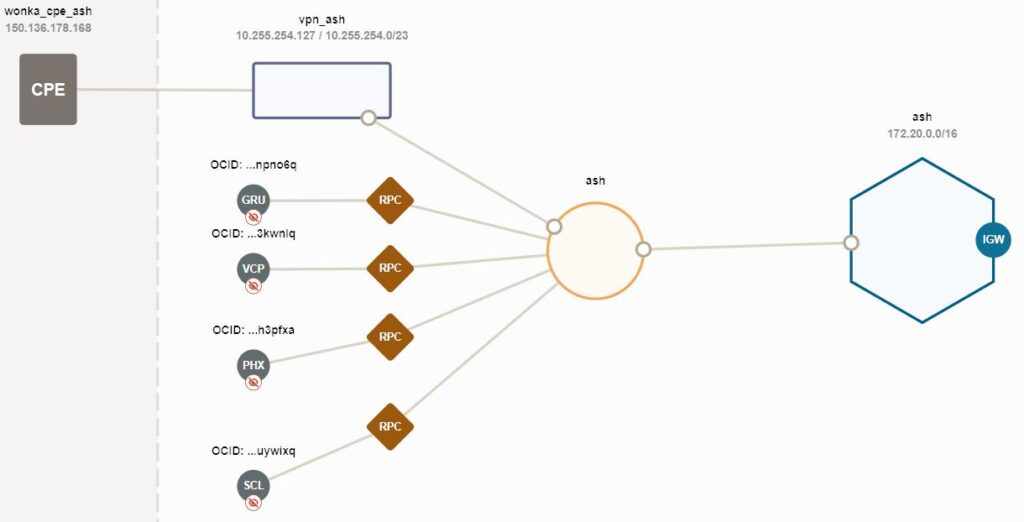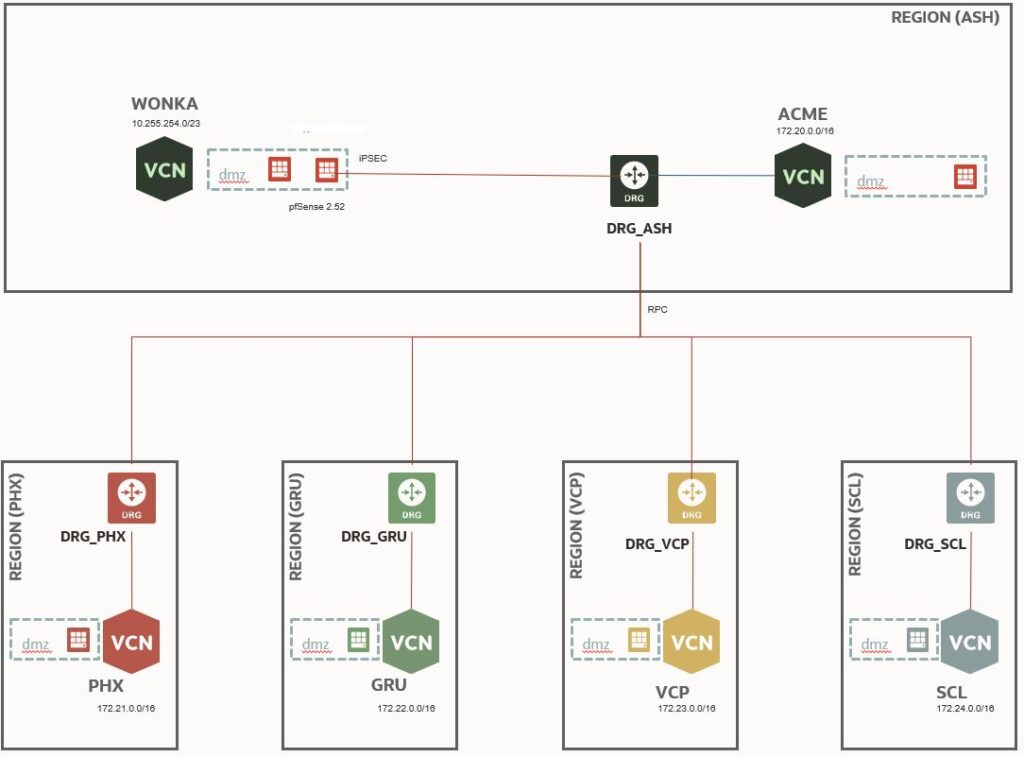Intro
Terraform Code to launch working LAB to deploy and better explore DRG enhancements.
This code make available in Jun/04/2020 initial version 1.0. Objective is provide an working and described LAB environment to explore how to work and see some options on how works the new enhancements of OCI Dynamic Routing Gateway DRG. this simple scenario illustrated bellow.
This sample is an multi region deployment because each VCN will be deployed in specific regions.


This deployment diagram is an sample deployed in my environment to create this code. This is the result of the provisioning using the Network visualizer.
The Architecture
The architecture has an representation of an onPrimses environment located closer as possible to a cloud region.
The fantasy name “Wonka” represents an onPrimses deployment. As we are buind an network LAB, we also use VPNs and IPSEC connections. To deploy this I use pfSense because I had available to test. The deployment of pfSense or other alternatives will be better explored in another post.
However, you can choose any Virtual Appliance Firewall of your choice that OCI Support. This code creates a Customer OnPrimeses Equipment – CPE. In my case my pfSense Image deployed in my tenancy. Also, will deploy even the virtual appliance and configure the iPSEC from OCI side for you. Inside the virtual appliance you must configure the VPN settings.
Most of the cases the onPrime structure will be closer to a cloud region. This is the reason to also create an OCI deployment in Ashburn. This small OCI footprint has:
- VCN
- route table
- security list
- compute instance
- CPE
- VPN Connect
- DRG
- RPC connections
- Route distributions
Each OCI footprint deployment as distinct home regions. It is a multi region deployment. This initial LAB makes configure the peering’s from Ashburn to PHZ, GRU, VCP, SCL regions. You can follow the same configuration principal and connect the remains remote peering gateways’ as you wish.
This initial version use was projected to be converted later to a git module and today is receiving parameters for each footprint deployment.
- Terraform version: v0.15.4
- OCI provider: 4.28.0
Instructions
Check if you have limits available to deploy DRGs will be required 5.
Rename the sample config file – sample_deploy_config.tf_sample to deploy_config.tf
Adjust the following variables according your deployment:
- OCI_HOME_REGION: tenancy home region e.g.: us-ashburn-1
- OCI_USER_ID: use OCI console to retrieve the user id
- OCI_API_KEY_FINGER_PRINT: add the API sining key you can ckeck Markup : Setup OCI Signing Key
- private_key_path:
If you use MS Windows: file(“MS WINDOWS STILE: C:\Users\mike\.oci\oci_api_key.pem”
If you use LINUX/MAC “/home/bozo/.oci/oci_api_key”) - OCI_VIRTUAL_APPLIANCE_FROM_MKTPLACE: In my case I’ve used pfSEnse. However, you can choose any firewall of next generation firewall available in OCI marketplace. You can also use the respective image ID from an custom image. This code consider this usage and will deploy also the instance for you and use the information to build the IPSEC configuration.
enjoy!
